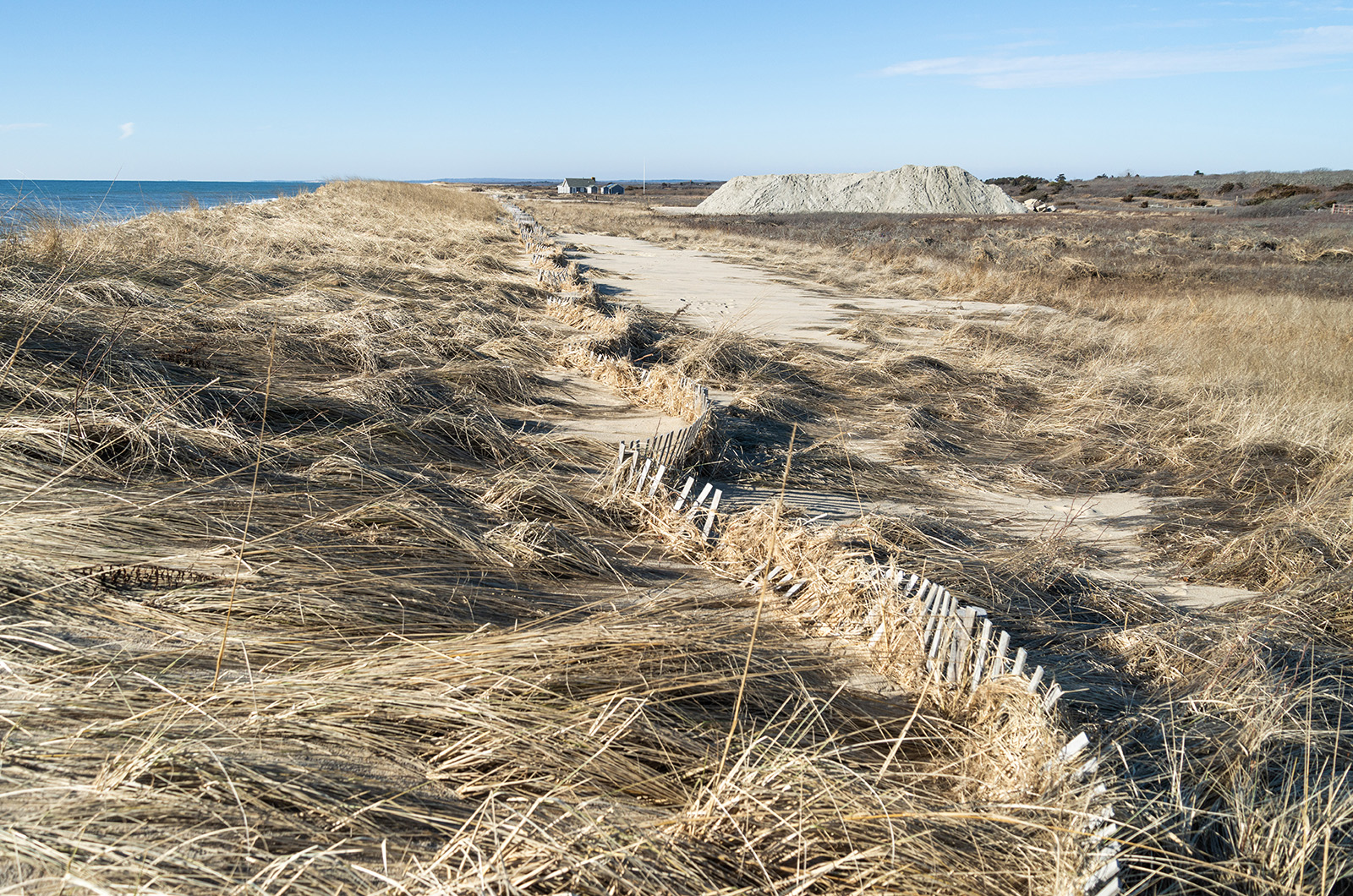A little more than two weeks ago, Edgartown’s Atlantic Drive was awash in sand and debris after a brutal storm tore up the Vineyard’s south shore.
Now, the road that runs parallel to South Beach is mostly cleared, free of flotsam and again open to drivers.
But the bike racks that block off a sinkhole that opened up during the Dec. 18 storm are a reminder that while most of the initial cleanup efforts have been completed, towns still face hard decisions as erosion continues to eat away at the edges of the Island.
Though it wasn’t as damaging as Hurricane Bob, Edgartown conservation agent Jane Varkonda said this recent storm, which erased dunes in a matter of hours, breached into nearby ponds and strewed hundreds of pounds of debris along the coast, is one of the more destructive storms she can remember.
“The amount of dunes that were impacted and stripped bare, it is pretty high up there,” Ms. Varkonda said while thinking back to storms past.
Emily Reddington, the executive director at the Great Pond Foundation, said the storm was the first since Hurricane Bob in 1991 to breach Long Cove, a freshwater body that has now had reported fishkill with the influx of salty water. Watcha Pond, another freshwater pond, was also breached, raising concerns.
“It’s a big enough storm that we can see impacts,” said Ms. Reddington. “That just reminds us of our vulnerability as an island.”
To deal with the drastic changes, Edgartown is now considering taking dredged sand from Edgartown Great Pond to rebuild South Beach, a practice it has done in the past to beef up the barrier beach.
“There’s a possibility that may happen to help restore the dunes,” Ms. Varkonda said. “We’re fortunate. Having our own dredge has been a godsend.”
The town is also looking at how to deal with the sinkhole, which has been partially filled in.
“We’re going to have to come up with a permanent repair,” said James Hagerty, the town administrator.
In Chilmark, where Lucy Vincent Beach lost an estimated 13 feet of beachfront, beach superintendent Martina Mastromonaco said she would also petition for replenishment and extra vegetation to shore up the disappearing dunes now that most of the debris has been cleared.
But such action has been hard to get done in the past.
“We’re kind of at a standstill,” Ms. Mastromonaco said. “The town hasn’t given me further direction on cleanup.”
Construction wood from neighbors’ stairs and other projects still litter the dunes, and Ms. Mastromonaco hoped to have a meeting soon to talk about next steps.
The storm, which brought waves as tall as 25 feet just south of South Beach, left trash all over the Island. Vineyard Conservation Society’s Beach BeFrienders group picked up more than 640 pounds of trash along Aquinnah beaches, said Laurissa Rich.
Sarah Thulin, an Aquinnah conservation commission member, said that like other places, some of the town’s south-facing beaches now have swaths of exposed rock.
“What was real sandy, with the storm you get this ongoing change,” she said.
That town hasn’t decided on any future changes and Ms. Thulin wasn’t in favor of adding more sand.
“I find that to be futile,” she said. “People need to recognize there will be areas of beach erosion that will be back and forth.”
As erosion continues at a rapid clip, Ms. Reddington encouraged leaders to consider ways to protect the coast as it constantly changes.
“How do you respond, knowing it’s going to change,” she said. “It’s going to call for private-public partnerships to support these ecosystems. There’s more work to be done.”
Still, several officials said that change is inevitable and beachgoers should expect different sandy shores year after year.
“People are very sad,” said Ms. Mastromonaco. “I try to tell them don’t be sad . . . . It’s just a different view. It’s still the same beautiful place.”








Comments (9)
Comments
Comment policy »